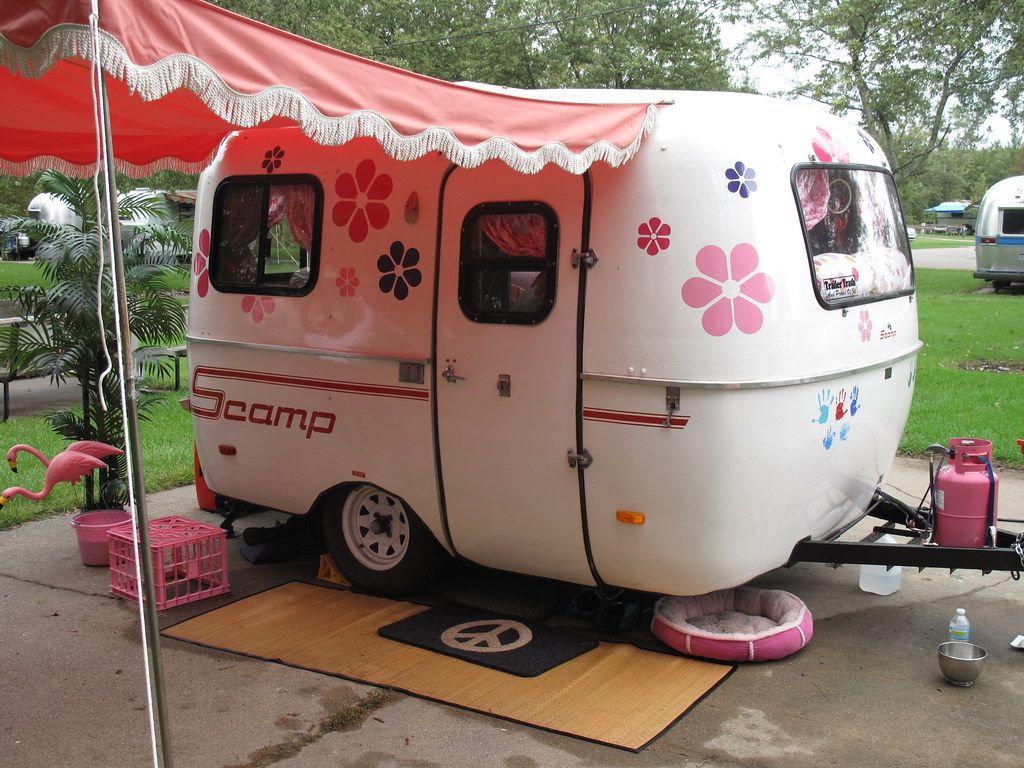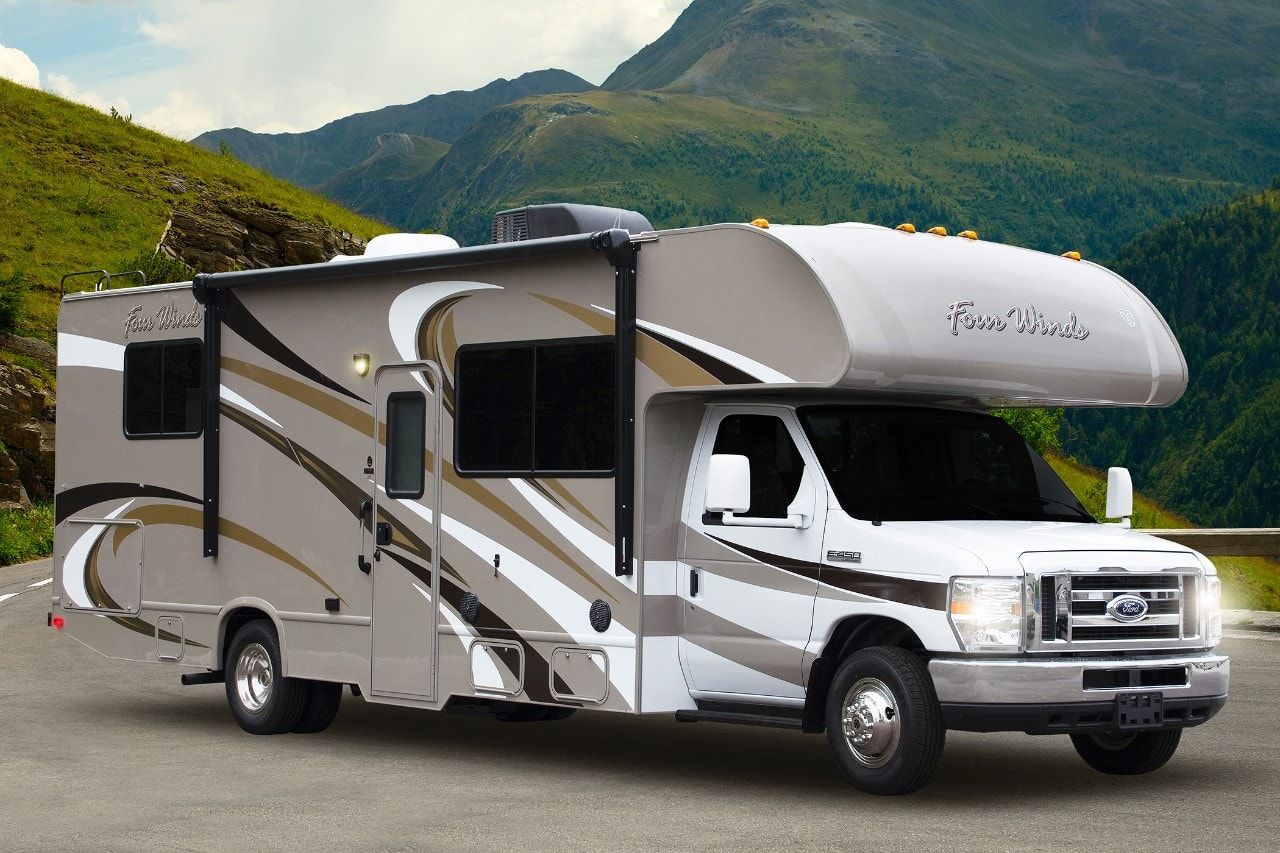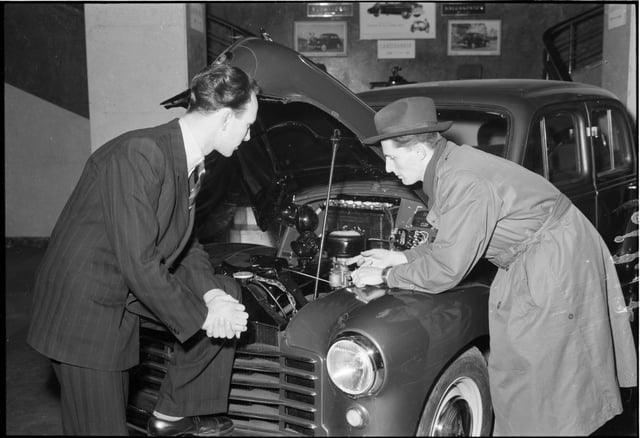Embarking on an RV adventure promises the thrill of the open road and the comfort of a home on wheels. It’s no wonder that 90% of RV-owning households hit the road for at least three trips every year, eager to explore new horizons and create lasting memories. Having all the amenities of home at your fingertips while cruising through stunning landscapes is truly a unique experience that drivers and passengers alike cherish. But as with any journey, ensuring everyone’s safety and staying compliant with the rules is paramount to a smooth, enjoyable, and worry-free trip.
While your RV offers unparalleled convenience, allowing you access to facilities that other vehicles simply don’t, it also comes with a unique set of responsibilities and guidelines. Understanding these RV driving rules, especially for passengers, is crucial before you even start the engine. It’s not just about what the driver needs to do; passengers play an equally vital role in maintaining a safe environment, and knowing what you absolutely cannot do while the RV is in motion is key to a successful journey for everyone on board.
This guide is designed to empower you with the knowledge needed for a safe and legal RV experience. We’re diving deep into the often-misunderstood rules that govern passenger conduct in a moving RV, separating fact from assumption, and clarifying those gray areas. From staying securely seated to understanding the limitations of certain RV types, we’ll equip you with the practical, actionable insights you need to make every mile of your RV adventure as safe as it is memorable. Let’s explore some critical things passengers absolutely cannot do while an RV is being driven.

1. **Walking Around Unbuckled**While the spacious interior of a motorhome might tempt passengers to stretch their legs or access amenities at will, the reality is that freely walking around while the RV is in motion is often a strict no-go. This isn’t just about good practice; it’s frequently a legal requirement in many states, and always a matter of safety. State seat belt laws are the primary determinant here, and they vary significantly. For instance, states like Georgia mandate that all occupants wear a seat belt whenever the vehicle is in motion, meaning getting up and unbuckling is simply not an option.
Even in states with less stringent seat belt laws, where adults might theoretically be permitted to move unbuckled, it’s a decision fraught with risk. The inherent dynamics of a moving RV, including sudden stops, sharp turns, or unexpected shifts, can easily throw an unbelted person off balance, leading to serious injury. The very nature of RVs, which are generally not designed with the same crumple zones and airbags as modern passenger vehicles in their living areas, means that seat belts are often the only primary safety feature available. Prioritizing continuous seat belt use is the most effective way to protect yourself and your loved ones from potential harm, making unbuckled wandering a definite item on the ‘can’t do’ list.
Read more about: Unbelievable ’70s Norms: 13 Shocking Things That Would Never Fly in Today’s World

2. **Sleeping in Unbelted Beds**Road trips are synonymous with naps, and the idea of catching some quality sleep in a comfortable RV bed while someone else handles the driving might sound incredibly appealing. However, when it comes to sleeping in an RV, there’s a critical distinction to be made for passenger safety. While a passenger who can sleep comfortably and securely buckled into a designated RV passenger seat is generally free to do so, drifting off in an RV bed while the vehicle is in motion is expressly not allowed, and for very good reason.
The danger here is clear and immediate. If the RV driver needs to make a sudden stop, swerve, or is involved in a collision, an unbuckled passenger in a bed has absolutely no protection against being violently thrown from the bed, potentially sustaining severe injuries. Even in states where passengers might not be legally required to wear a seatbelt at all times, the physical risks remain unchanged. Passenger safety is paramount, and the explicit rule is to remain properly buckled up if you choose to sleep. For those seeking shut-eye on the road, ensure you’re securely fastened in a passenger seat, making sleeping in an unbelted bed a definite item to avoid.

3. **Riding in Towable RVs (5th Wheels & Travel Trailers)**When considering passenger safety in an RV, it’s absolutely crucial to distinguish between motorhomes and towable recreational vehicles, such as fifth-wheel trailers and conventional travel trailers. While Class A, B, and C motorhomes are specifically designed and equipped to safely transport passengers in their living areas (provided they are seated and buckled), towable RVs fundamentally lack the necessary safety features for such an undertaking. These units typically do not have seatbelts, nor are they engineered to protect occupants in the event of a crash, which is a critical difference that cannot be overstated.
The legality of riding in towable RVs while they are being driven is also a complex and heavily restricted matter across the United States. Riding in a fifth wheel, for example, is illegal in 26 states and only permissible under specific regulations in another seven. For travel trailers, the restrictions are even broader, with riding in them while being towed being illegal in 39 states. This patchwork of state laws, combined with the inherent lack of safety provisions like seatbelts and crash protection, makes riding in a towed fifth wheel or travel trailer a clear and widespread prohibition. The simplest and safest approach, both physically and legally, is to ensure all passengers are always in the tow vehicle or a motorhome, securely buckled up.

4. **Standing or Sitting on Unsecured Beds/Tables**The open design and home-like feel of an RV can sometimes lead passengers to treat it much like a stationary home, even when it’s barreling down the highway. This is particularly true for comfortable spots like beds and dining tables. However, it’s a critical safety point that standing or sitting on beds or tables while the RV is in motion is not just dangerous, but explicitly prohibited. These areas are not designed for occupant safety during transit; they lack the necessary restraints and structural integrity to protect someone during sudden movements or an emergency stop.
Think about the physics of a moving vehicle. Even a minor jolt or unexpected turn can cause an unsecured person to lose their balance and be thrown from a bed or table. The consequences could range from minor bumps and bruises to severe injuries. Beyond personal injury, unsecured individuals could also become projectiles themselves, endangering other passengers or the driver. This regulation extends to ensuring all loose objects within the RV are secured, reinforcing the principle that anything not fastened down or properly belted can become a hazard. Therefore, to safeguard everyone on board, passengers must always use designated, belted seating areas, making standing or sitting on unsecured beds and tables an absolute ‘can’t do’ while driving.”

5. **Ignoring State-Specific Seatbelt Laws and Car Seat Requirements**One of the most critical aspects of RV passenger safety revolves around understanding and adhering to seatbelt and car seat laws, which are far from uniform across the United States. While it might seem straightforward, the legal landscape for RV occupants is complex and varies significantly from state to state. For instance, while every state, with the lone exception of New Hampshire for adults, mandates that all passengers in the cab of a motorhome wear seatbelts, the rules for those riding in the rear living areas become much more nuanced.
Indeed, some states, a group that includes nineteen states plus Washington D.C., have very strict requirements, mandating every occupant to wear seat belts regardless of their age or where they are positioned in an RV. This means whether you’re cruising through California, Georgia, or Washington, everyone needs to be buckled up at all times. Conversely, another twenty-four states have specific regulations that hinge on age and other factors, often requiring only passengers under a certain age (e.g., under 16 in Arizona, Illinois, or Wisconsin) to be belted in the rear of an RV. Always double-check the RV seat belt laws of the states you’re visiting, consulting their state transportation websites for the most accurate and up-to-date information.
Beyond just seatbelts, it’s absolutely vital to remember that ‘seat belts cannot be used in lieu of car seats as required by state law!’ Every state has specific car seat and booster seat laws that apply to RVs just as they do to any other passenger vehicle. This is not just a recommendation but a legal requirement for the safety of younger passengers. The best course of action, aligning with both the legal and safety rules of thumb, is to assume that all passengers, and especially all minors, are required to wear seat belts and be properly restrained according to age-specific car seat laws, ensuring maximum protection for your loved ones.
6. **Exceeding Occupancy Limits Without Proper Seatbelts**It’s a common misconception that an RV’s sleeping capacity directly translates to its passenger capacity while driving. This is a critical distinction that RVers must understand to ensure safety and legal compliance. In reality, the number of passengers an RV can safely and legally carry is often less than its sleeping capacity, with the golden rule frequently being: the number of passengers should equal the number of seatbelts. Overcrowding an RV can lead to a host of safety hazards and may even make it impossible for occupants to exit safely in the event of an emergency.
The precise number of people you can legally transport in an RV is influenced by several factors, including the state you’re traveling in, the specific type of RV you own, and the age of your passengers. For instance, in states that enforce mandatory seatbelt use for every occupant, the passenger capacity is strictly limited to the number of available seatbelts in the RV. The context even provides specific occupancy limits for different motorhome types while in motion: Class A motorhomes can carry up to 8 passengers, Class B motorhomes up to 4, and Class C motorhomes up to 6. This vital information is usually found in your RV’s owner’s manual or displayed inside the vehicle.
For states with age-related or less stringent adult seatbelt restrictions, the legal waters can become a bit murkier regarding additional adult passengers not legally required to wear a seatbelt. While it might seem like a “gray area,” packing people in like a “clown car” is never advisable. Such actions can still fall under “endangerment laws” that states might invoke if they perceive a line has been crossed, compromising safety. Therefore, adhering to the principle of one passenger per available, properly anchored seatbelt is the safest and most legally sound approach, prioritizing everyone’s well-being over squeezing in extra travelers.

7. **Allowing Driver Distraction**While the RV environment offers a unique sense of togetherness, it’s absolutely paramount that passengers understand and adhere to the rule of not distracting the driver. The road demands the driver’s full and undivided attention, and any distraction can significantly compromise safety. An RV is a large vehicle, requiring precise handling, especially during unexpected events like sudden stops or swerves, making a focused driver an absolute necessity for everyone’s well-being on board.
Passengers play a crucial role in maintaining a safe driving environment by actively minimizing potential distractions. This means limiting unnecessary conversations that could divert the driver’s attention from the road. Furthermore, electronic devices, whether phones, tablets, or portable entertainment systems, should be used thoughtfully to ensure their sounds or visual elements do not become a source of distraction. Designating someone to manage entertainment or navigation can also help keep the driver’s focus solely on driving.
It’s also important for passengers to be mindful of the overall noise levels inside the RV. Excessive volume from music, movies, or even boisterous conversation can make it difficult for the driver to hear important updates, warnings, or even the subtle sounds of traffic and the vehicle itself. By taking these proactive steps, passengers empower the driver to remain alert and focused, contributing significantly to a smooth and secure journey for everyone traveling in the RV.
Read more about: Soaring Horizons: A Deep Dive into the Samson Switchblade, the Revolutionary Street-Legal Flying Sports Car Redefining Travel
8. **Making Unapproved Aftermarket Seatbelt Modifications**For RV owners looking to increase their passenger capacity, the idea of adding aftermarket seatbelts might seem like a practical solution. However, this is a complex area fraught with challenges and potential pitfalls. While it is technically possible to install additional seatbelts, ensuring they meet rigorous federal safety regulations can be exceedingly difficult, if not outright impossible. Many reputable auto shops are hesitant, even refusing to undertake such modifications due to the immense liability risks involved, highlighting the specialized nature and critical importance of proper installation.
Even if an individual manages to find an installer, or attempts a do-it-yourself project, there’s a significant distinction between having a strap across a seat and having an officially recognized, properly functioning seatbelt system. A poorly installed or inadequately anchored seatbelt offers little to no real protection during a collision and may not be officially recognized for legal or insurance purposes. The core issue lies in the fact that seatbelts and their corresponding seats must be robustly anchored to the RV’s chassis to provide genuine safety value, a design element often not considered for aftermarket additions in the living area.
To ensure both optimal safety and full legal and insurance coverage, the most reliable course of action is to engage directly with the RV’s manufacturer or a certified dealer. These experts possess the necessary knowledge, resources, and often the ability to customize an RV with additional, compliant seating and seatbelt systems that meet all relevant safety standards. This proactive approach minimizes risks and provides the peace of mind that all passengers are protected by officially approved and tested safety equipment.

9. **Disregarding General Safety and Exit/Entry Protocols**Beyond the specific rules about movement and seating, a safe RV journey also depends on adhering to general safety protocols and strict guidelines for entering or exiting the vehicle while in motion. Firstly, creating a secure environment inside the RV means ensuring that all doors and windows are closed while the vehicle is driving. This simple step helps maintain the structural integrity of the vehicle, controls the internal environment, and prevents accidental openings or potential hazards from external elements.
Furthermore, all loose items within the RV must be secured to prevent them from becoming dangerous projectiles during sudden stops, turns, or impacts. This includes everything from small personal belongings to larger appliances like a stove, oven, or refrigerator, which must be in proper working order and secured to prevent shifting. Utilizing binders, Velcro strips, bungee cords, and latches to secure items in their storage locations is crucial. Taking these measures before hitting the road significantly reduces the risk of injury to passengers and damage to the RV’s interior.
Critically, passengers must never attempt to enter or exit an RV while it is in motion. This is a highly dangerous act that can lead to severe falls, serious injuries, or worse. All entry and exit must occur when the RV is completely stopped and parked in a safe location. When the vehicle is safely at a standstill, passengers should always use the grab handles provided, step carefully, and wear appropriate footwear with non-slip soles – avoiding flip-flops or high heels – to ensure a secure grip and prevent slips or falls. Following these straightforward precautions guarantees a safe experience for everyone on board, from departure to arrival and every stop in between.
As we’ve explored the multifaceted aspects of RV passenger safety, it becomes clear that a truly enjoyable journey is built upon a foundation of informed decisions and diligent adherence to guidelines. The freedom of the open road in an RV is a privilege, and with that comes the shared responsibility of ensuring everyone on board understands and respects the rules. From navigating complex state laws on seatbelt usage to securing every last item and practicing safe entry and exit, each passenger plays a vital role in crafting a memorable, safe, and stress-free adventure. By embracing these actionable insights, you’re not just following rules; you’re actively contributing to the well-being of your fellow travelers and making every mile count towards an unforgettable experience. Happy trails, and may your RV journeys always be safe and rewarding!






